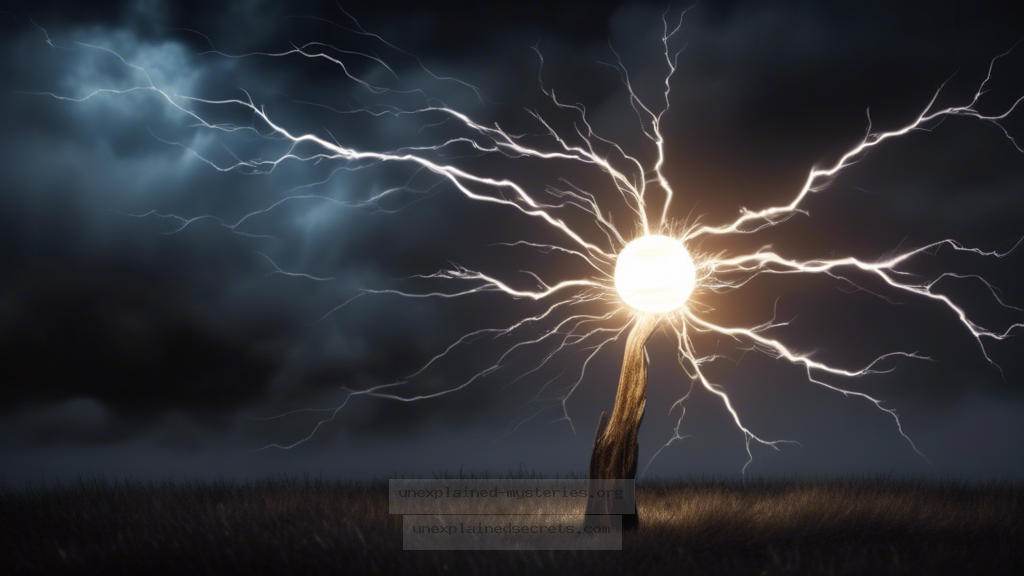What Causes the Mysterious Behavior of Ball Lightning?
What Causes the Mysterious Behavior of Ball Lightning?
Ball lightning has captivated scientists and enthusiasts alike for centuries, representing one of the most intriguing unexplained phenomena in the realm of physics. Unlike typical lightning, which is a well-understood electrical discharge, ball lightning appears as glowing orbs that can float, move erratically, and even enter buildings. The question of what causes this strange phenomenon is significant not only for the advancement of scientific knowledge but also for the safety and understanding of natural occurrences. This blog post delves into the mysteries of ball lightning, exploring its historical context, core concepts, documented cases, and the latest research efforts aimed at unraveling this enigma.
Historical Context of Ball Lightning
The earliest recorded instances of ball lightning date back to ancient times. Descriptions of glowing spheres appearing during thunderstorms can be found in various cultures, but one of the first documented accounts in modern history comes from the 19th century. In 1838, British scientist Michael Faraday witnessed a phenomenon that he described in his notes, laying the groundwork for future investigation into ball lightning.
Throughout the years, many notable figures, including Nikola Tesla and Thomas Edison, expressed interest in ball lightning. However, despite numerous observations, scientific understanding remained elusive. The lack of reproducibility in laboratory settings contributed to skepticism about its existence until the advent of modern technology allowed for more detailed study.
Core Concepts and Theories Behind Ball Lightning
Several theories have emerged to explain the nature of ball lightning. Here are a few of the most prominent concepts:
- Plasma Theory: Some researchers suggest that ball lightning may consist of plasma—ionized gas that can emit light and heat. This theory posits that ball lightning could form when electrical discharges create a stable plasma configuration.
- Vapor Theory: Another theory proposes that ball lightning is created from vaporized silicon and other materials. When lightning strikes, it can vaporize the ground, and these particles may coalesce into glowing orbs.
- Quantum Phenomena: Some researchers speculate that ball lightning may involve quantum effects, potentially linking it to phenomena like superposition and entanglement. This theory remains highly speculative and is a topic of ongoing research.
Real-World Examples of Ball Lightning
The documentation of ball lightning events adds a layer of credibility to the phenomenon. One notable case occurred in 1904 when a group of scientists observed a ball lightning event during a thunderstorm in Russia. Witnesses reported seeing a glowing orb moving through the air before exploding, leaving behind a charred area on the ground. Similar reports have surfaced from different parts of the world, including the USA, Europe, and Asia, suggesting that ball lightning may not be isolated to specific geographical locations.
Another remarkable incident took place in 1984 in the UK when a woman reported seeing a ball of light enter her home during a thunderstorm. The orb hovered for a few moments before disappearing, leaving behind no trace. Such anecdotes highlight the compelling nature of ball lightning and its impact on those who encounter it.
Scientific Investigations and Ongoing Research
In recent years, advancements in technology have allowed researchers to study ball lightning more closely. In 2014, a team of scientists in China claimed to have created ball lightning in the laboratory by simulating the conditions of an electrical discharge. This breakthrough ignited renewed interest in the phenomenon and provided valuable data for understanding its properties.
Moreover, researchers are utilizing high-speed cameras and spectroscopic analysis to capture ball lightning events in real-time. These studies aim to identify patterns in the behavior and composition of ball lightning, potentially leading to a deeper understanding of its nature.
Alternative Perspectives and Skepticism
Despite the growing body of evidence, skepticism remains prevalent in the scientific community. Some experts argue that many reported instances of ball lightning can be attributed to misperceptions of other natural phenomena, such as fireballs or electrical discharges. The lack of reproducibility in controlled environments has led some to dismiss ball lightning as a mere anecdote rather than a legitimate scientific inquiry.
Furthermore, the complexities of atmospheric physics complicate the study of ball lightning. The interplay between various environmental factors, such as humidity, temperature, and electrical activity, makes it challenging to isolate the conditions necessary for ball lightning formation.
Common Misconceptions about Ball Lightning
Many misconceptions surround ball lightning, often stemming from the mysterious aura that envelops the phenomenon. Here are a few common myths:
- Myth 1: Ball lightning only occurs during thunderstorms.
In reality, ball lightning has been reported during calm weather and even indoors, indicating it may not be solely linked to thunderstorms. - Myth 2: Ball lightning is always dangerous.
While some reports involve destructive behavior, not all instances result in harm. Many witnesses describe ball lightning as appearing harmless. - Myth 3: Ball lightning is a form of conventional lightning.
Ball lightning differs fundamentally from traditional lightning in its behavior and appearance, warranting distinct classification.
Best Practices for Investigating Ball Lightning
For those interested in studying ball lightning, several best practices can enhance the investigation:
- Document Observations: Maintain detailed records of any ball lightning sightings, including location, weather conditions, and the behavior of the phenomenon.
- Use Technology: Employ high-speed cameras and other recording devices to capture ball lightning events, as this can provide valuable data for analysis.
- Collaborate with Experts: Engage with scientists and researchers in the field of atmospheric physics to share insights and findings.
Future Developments and Implications
The future of ball lightning research is promising, with ongoing studies likely to yield new insights into its nature. As technology advances, researchers may uncover the mechanisms behind ball lightning formation, leading to practical applications in energy generation or atmospheric studies. Understanding ball lightning could also enhance safety measures during thunderstorms, helping to mitigate risks associated with electrical discharges.
Conclusion: The Allure of the Unexplained
Ball lightning remains one of the most captivating mysteries in the realm of scientific anomalies. Its elusive nature has sparked curiosity and debate among scientists and enthusiasts for generations. While various theories attempt to explain its behavior, no consensus has been reached, leaving room for continued exploration and discovery. As research progresses, we may finally uncover the secrets of ball lightning, shedding light on this enigmatic phenomenon that has fascinated humanity for centuries.
Other Articles
Recent Posts
- What Happened to Flight MH370? The Conspiracy Theories That Still Haunt Us
- What Secrets Lurk Within the Walls of the Infamous Trans-Allegheny Lunatic Asylum?
- What Evidence Supports the Existence of Bigfoot in the Pacific Northwest?
- What Happened to the Indus Valley Civilization? Unraveling the Mysteries of Ancient Urban Life
- Can Telepathy Be Scientifically Proven Through Laboratory Evidence?







